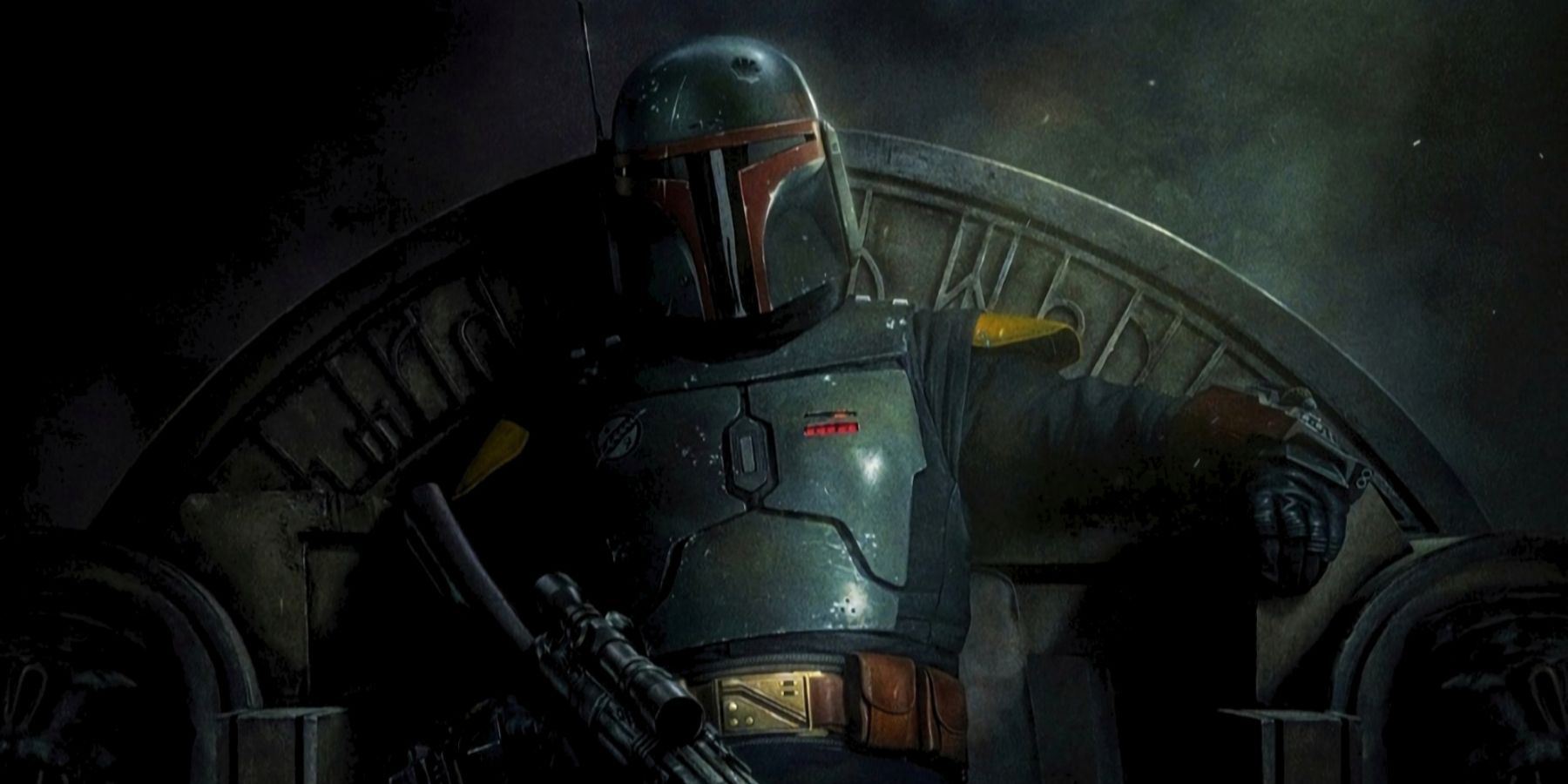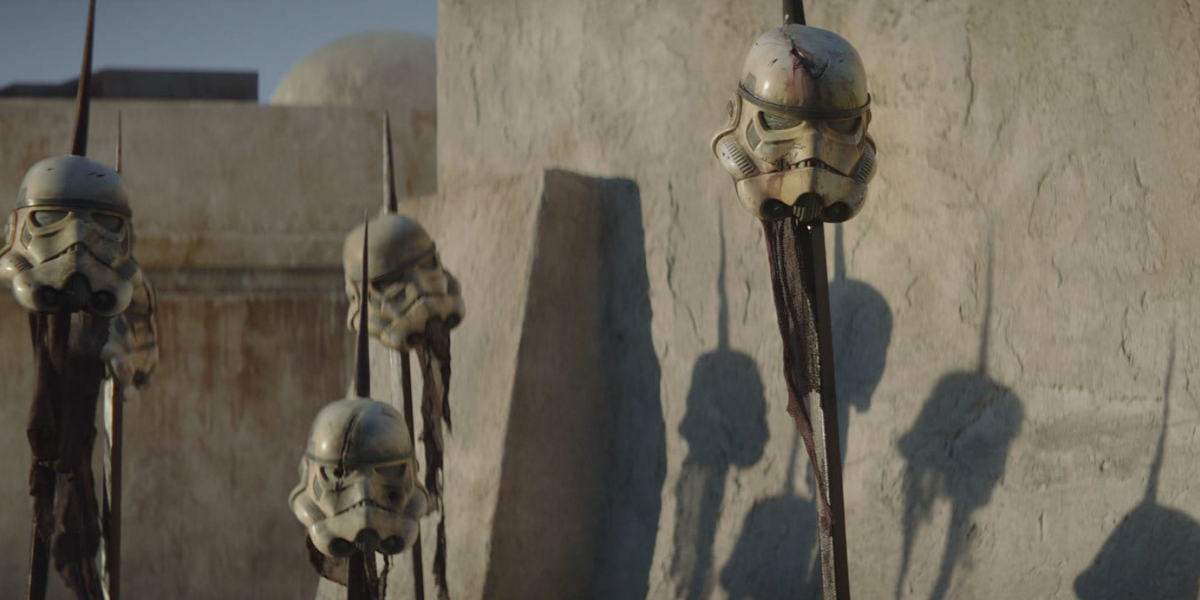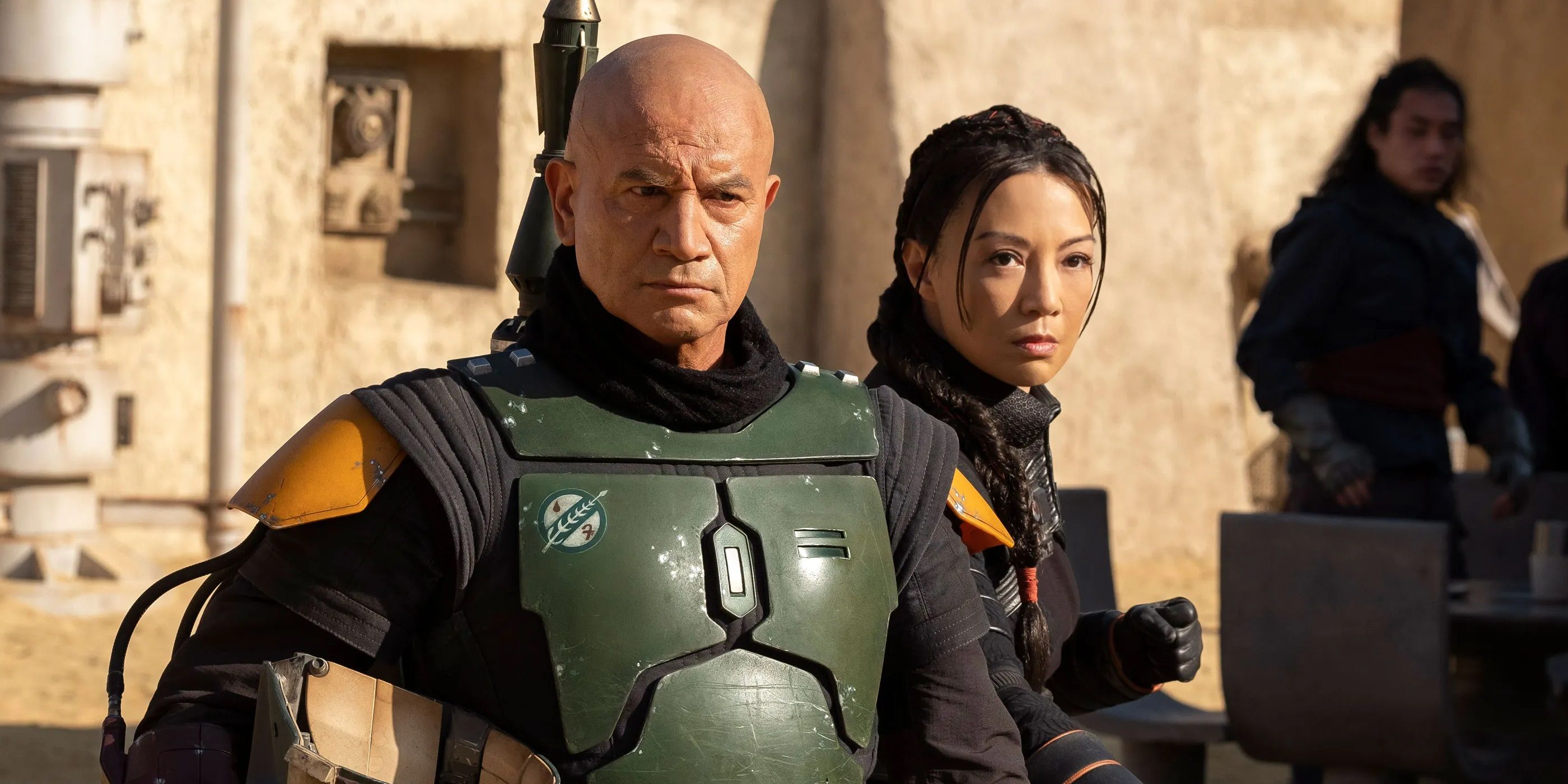The overarching timeline of the Star Wars franchise now spans a tremendous amount of time with constantly shifting forces that keep things interesting. Both The Mandalorian and The Book of Boba Fett chose to set their iconic stories in the largely unexplored thirty years between Return of the Jedi and The Force Awakens.
Each trilogy of Star Wars films is set in the same galaxy but in a radically different socio-political and cultural environment. These two Disney Plus series wisely explore the situation on the ground, rather than the view from the top provided by the main series films.
The Mandalorian's story begins five years after the fall of the Galactic Empire, Book of Boba Fett begins basically immediately after the conclusion of the second season. Early promotional material showed off Stormtrooper helmets on pikes outside of desert settlements, Giancarlo Esposito as a new Empire threat and a universe awash with crime. This setting, a galaxy recently freed from the domineering hand of the Empire, is the perfect period to keep these series interesting. A period of tremendous galactic upheaval provides a rich canvas to introduce new characters, explore new dynamics and experience the fall of the Empire and rise of its replacement from ground level. Life in the newly freed galaxy is revealed from the people struggling to survive, to the rebel forces trying to maintain order, to the remnants of the Empire's continued machinations. This period in the Star Wars timeline differentiates itself from the moments more typical to the franchise in a few key ways.
The primary way in which this period stands out flies right in the face of the title. This is a period of Star Wars in which there really isn't a war to speak of. Many have pointed out that the original trilogy is heavily inspired by World War II, and while it is mostly centered on the small group of main characters, the films show off a ton of the conflict. Rebel insurgents face imperial soldiers on a wide variety of battlefields in multiple types of engagement.
Here, the Empire is in shambles, able to operate in secret but regularly foiled by one eponymous bounty hunter and his ragtag ensemble of friends. The Rebels find themselves taking the role of a loose peacekeeping force, mainly portrayed as a slight inconvenience for the main cast. This leaves the galaxy in a state of tense peace, far from the wide-spanning conflict of each of the three trilogies. Removing the war from a Star Wars story is exactly the necessary gap to make room for the seedy underbelly backdrop of both series.
Where the trilogies are war stories, The Mandalorian and Book of Boba Fett are tales of lone heroes exploring a complex galaxy. This moment in the franchise is also marked by its distinctly reduced spiritual influence. During the rule of the Empire, the Jedi were evidently decimated. Reduced to only a handful of semi-practicing Knights, the Order is essentially without influence. Conversely, the Sith is also essentially out of play. With Vader dead and Sidious left to plan his comically intricate scheme for decades, the evil force users are equally non-factors at this moment.
The titular Mandalorian seems to have met most of the remaining Jedi, leaving his young charge to the care of Luke Skywalker for his attempt to rebuild the order. Both of these force-sensitive groups are major figures in the galaxy throughout most of the narrative, but both Mandalorian and Boba Fett eschew their importance. This decision dramatically changes the action of the franchise, focusing more on fast-paced, close-quarters shootouts than the traditional honorable lightsaber duels or the prequels' magic contests.
The real reason this time period so perfectly fits The Mandalorian and Book of Boba Fett is that both series are aiming for a very different genre than their source material. Both series are space westerns and their setting in the timeline is well suited for those tropes. Set in a time of technical peace, beset with widespread crime, marked by the weakness of the overarching systems of government or religion, ruled by lone old-fashioned cowboys.
The immediate aftermath of the downfall of the Galactic Empire would perfectly result in something akin to the wild west. This is really the only moment in the timeline well suited to this type of story. The time between the prequel and the original trilogies are marked by authoritarian dictatorship, the time before the prequels is mostly functioning democracy and the time after the sequels is undetermined. This sweet spot discovers a way to make use of the entire galaxy while making it all feel brand new, and that is no small feat.
The thirty-year gap between films six and seven provides the perfect springboard for new horizons in the Star War franchise. This wild west period of the timeline is part of what makes The Mandalorian and Book of Boba Fett the most dynamic Star Wars projects in years.



